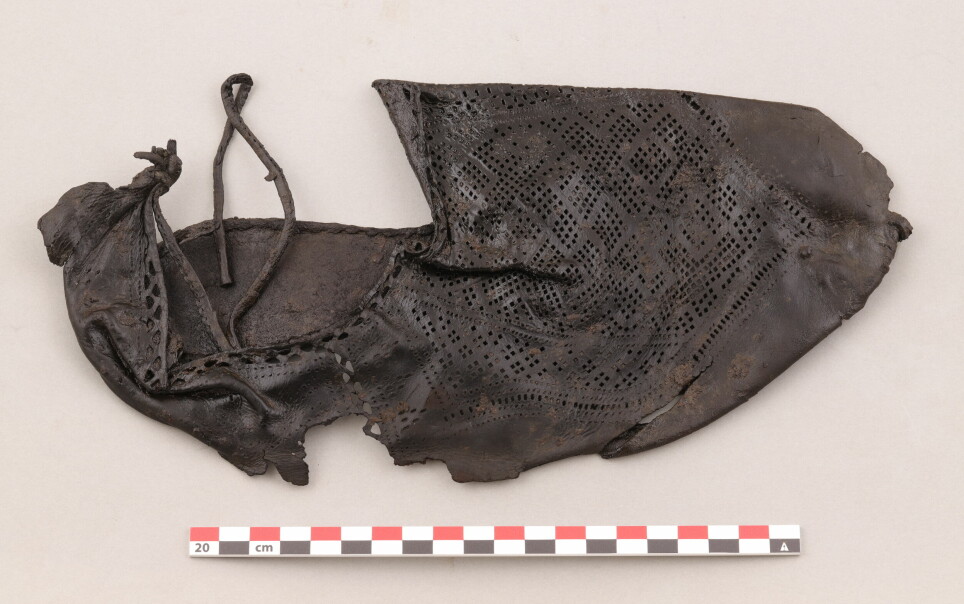
Medieval excavation greatest hits: 800 years ago a fashion queen strolled the streets of Oslo in this elegant shoe
An exquisitely carved king holding a falcon, an elaborately decorated shoe and a rune stick are among the finds the archaeologists have picked for their top 11 list of finds from the recently ended excavation in the Medieval Park in Oslo.
“We’ve found a lot!,” says archaeologist Mark Oldham from the Norwegian Institute for Cultural Heritage Research (NIKU). Oldham is the project manager for the excavation.
“We could just as well have made a list of 1100 finds,” he says.
This particular area of medieval Oslo had not been examined in depth for around 100 years.
In some areas, the archaeologists haven’t needed to go deeper than 10 cm to find traces from Oslo in the Middle Ages; a slightly different Oslo than what we have previously thought.
“There’s always been this idea that Norway was a poor country before the oil. Denmark and Sweden were the great nations, and then there was little Norway”, says Oldham.
“But Norway has historically been a relatively wealthy and well-connected nation in Europe. It certainly wasn’t a backwater or particularly peripheral country”, says the archaeologist.

The first phase of excavations in connection with the new Medieval Park is now completed, and the second phase is due to start in the summer.
Next year, the area will be covered in grass and sunbathers – if all goes to plan. And the trains between the suburb Ski and Oslo will be racing through the tunnels underground – the very reason why the excavation has taken place at all.
Which brings us to the greatest hits – in no particular order:
1. A sheath with copper alloy pins
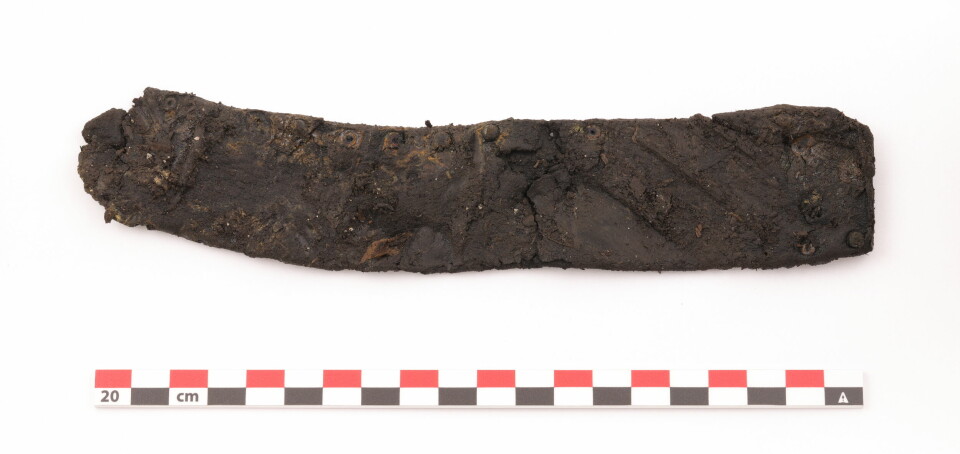
Sheaths are not an unusual find – but the copper alloy pins are.
“This sort of reinforcement along the edge is not common,” says finds expert and NIKU-archaeologist Linda Åsheim.
The sheath has not been properly washed yet, as the leather and the copper need different treatments. Conservators will do this once the find is documented and transferred to the Museum of Cultural History in Oslo
“It was probably quite common to carry a knife,” Åsheim comments. “It was an everyday sort of item.”
Still, the knife that was carried in this sheath had a long blade. It was also probably quite sharp, judging from the metal reinforcement that was attached at the top of the sheath to stop the blade from damaging the leather.
Sheaths are usually dated by the context in which they are found, and this particular sheath was found near a house dated to 1100.
2. A rune stick

Finding items with runic inscriptions is quite rare, but this this excavation has in fact found seven. Three bones, a hair pin, two ownership tags, and a rune stick.
“The stick probably is the most special one,” says Oldham.
For one thing, the runes spell out words in both Norse and Latin.
“This tells us something about the fact that people were multilingual. They had knowledge of languages. It wasn’t just the priest who knew Latin, but also those who practiced the religion,” says the archaeologist.
The other unusual thing is the personal content which is written on the small piece of wood.
“It tells us a story. It’s a witness of the Christian faith, and it’s a personal prayer," Oldham says.
On one of the broad sides, there are two Latin words: manus and Domine or Domini. Manus means hand, and Dominus means lord, or God. The words are found in a known Latin prayer: ‘In manus tuas, Domine, commendo spiritum meum’, meaning ‘Into thy hands, O Lord, I commend my spirit’.
The female name Bryngjerd is also inscribed.
- You can read more about the rune stick in this article: A bone and a stick inscribed with Norse runic text found in Oslo
- And here's more about the ownership tags: New runic find from medieval Oslo – this time it’s a name tag
3. The king and the falcon
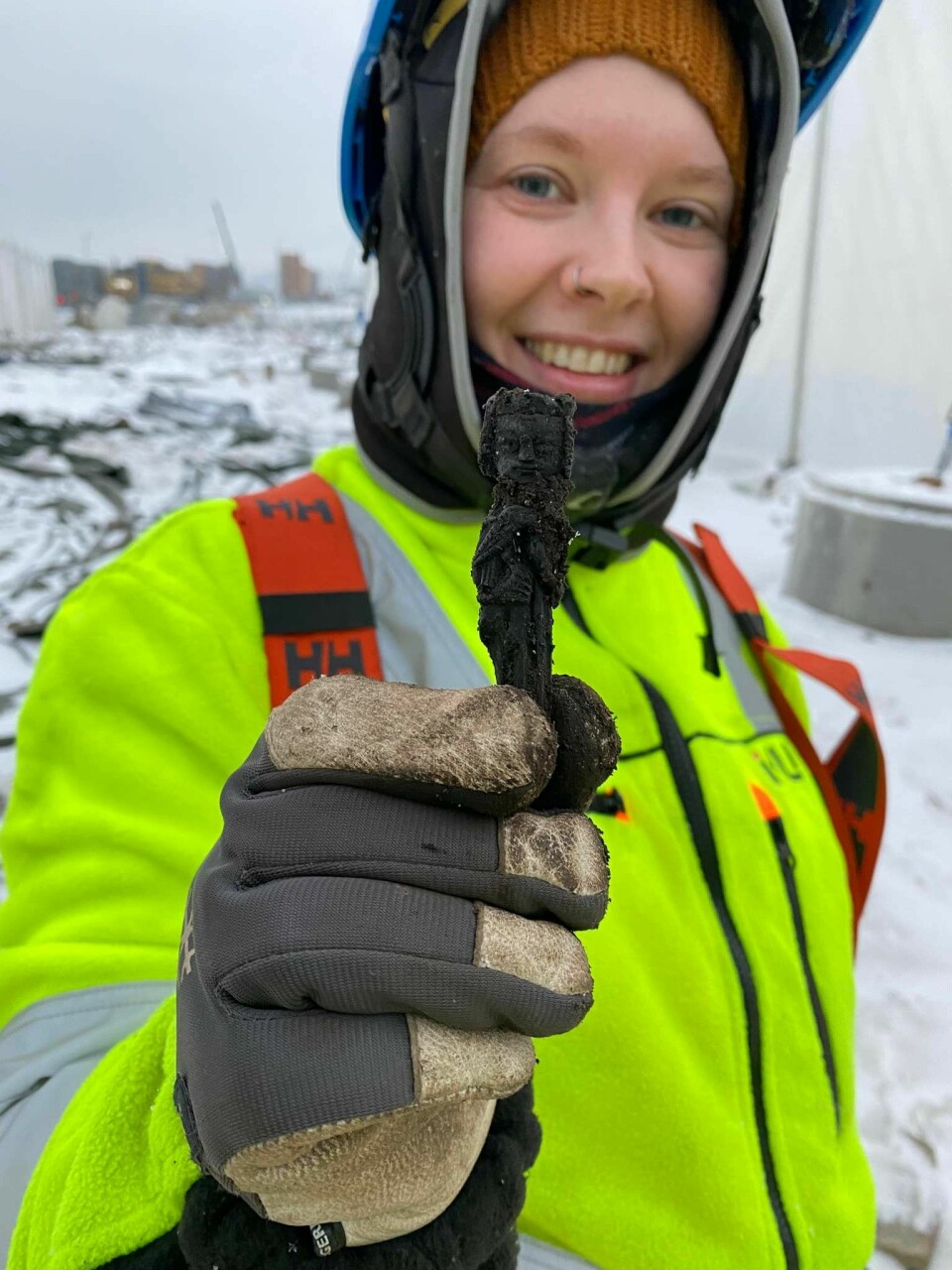
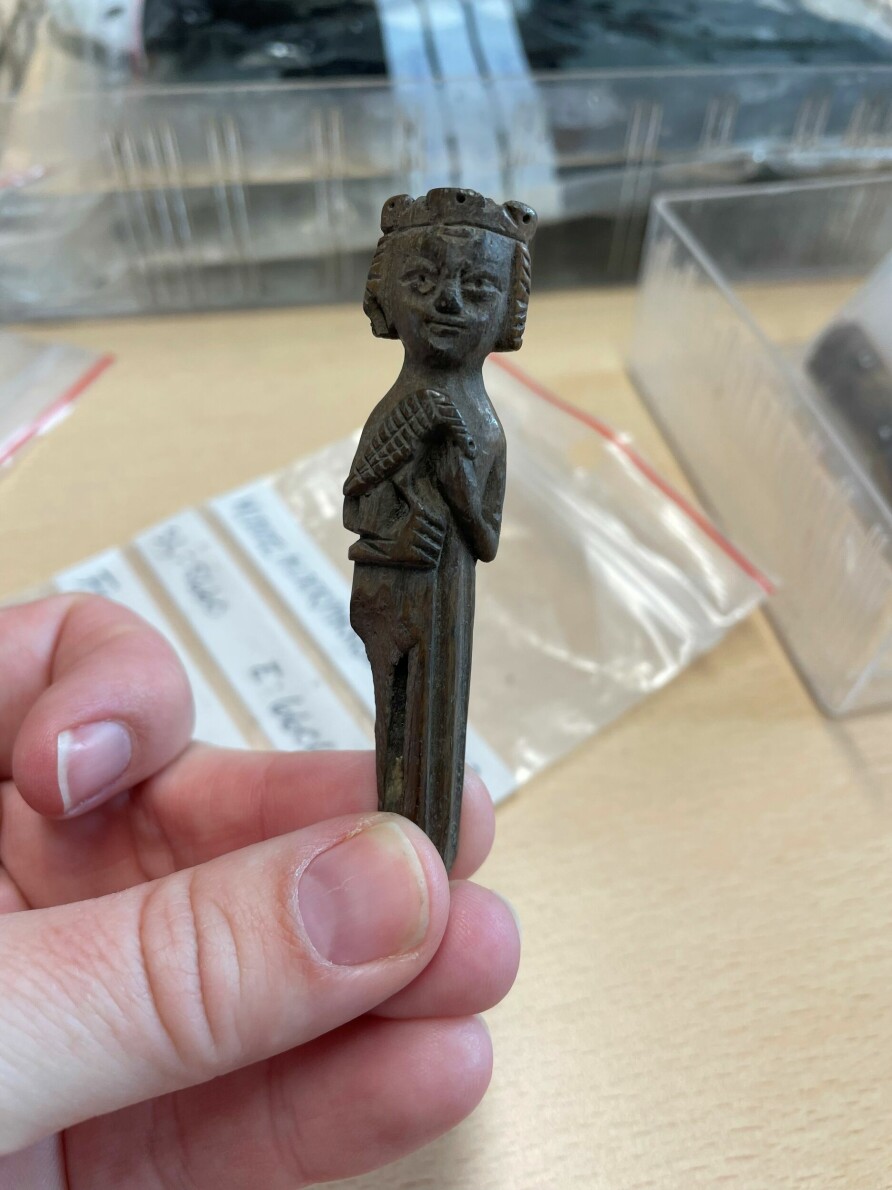
“This is one of our most striking finds” says Oldham.
The figurine fits perfectly in the palm of one’s hand. Perhaps it was the handle of a letter opener? A small knife?
“I call it Håkon and the falcon,” says Åsheim. “This artefact is dated to around 1250 based on the hairstyle of the King, and Håkon Håkonsson was king in 1250, so it is very much possible that this is a depiction of him,” she says.
The attention to detail is astounding; not only around the face and the falcon, but if you turn the king around, the cape creases down the back, and the King has been given an elaborate hairstyle.
“It’s so full of life,” comments Oldham.
“It’s an example of excellent craftsmanship.”
Art historian Kjartan Hauglid from NIKU has previously said to sciencenorway.no that he believes the knife handle was made for a member of a royal family or a member of the higher aristocracy. Being fashionable was most likely important in royal circles, according to Hauglid.
The crown has three visible holes and Hauglid believes that a ring of gold or silver might have been attached here, or that the crown itself perhaps was made in a different material.
- You can read more about this artefact in this article: Knife handle in the shape of a king from the 13th century found in the Medieval Park in Oslo
- And more about falconry here: The Norwegian medieval kings gave the best gifts.
4. An ice grip/crampon
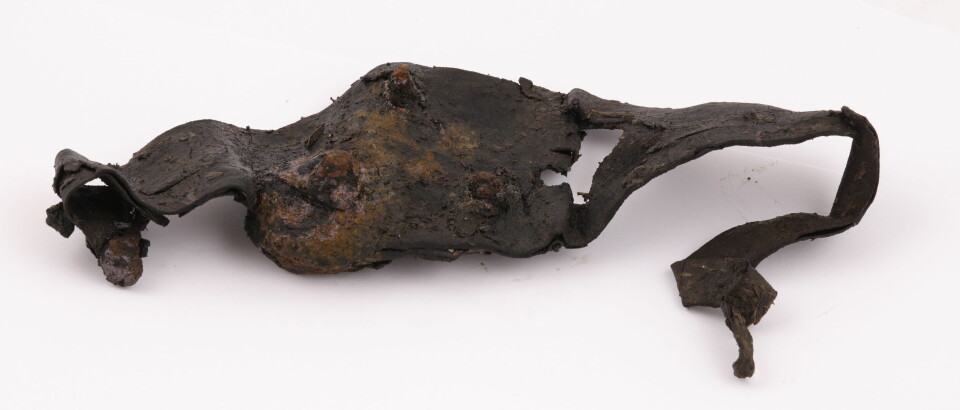
“This is something very familiar,” says Åsheim.
Ice grips - with spikes that dig into the ice to stop people from slipping - are a common feature in most Norwegian homes during winter, and clearly have been so for hundreds of years.
Finding them during medieval excavations therefore isn’t so unusual. The special thing about this particular item is that it is intact.
“We find the metal part quite often. But the whole thing, including the strap used to fasten it to the shoe – I’ve never seen that before,” says Åsheim.
5. A handle made of antler
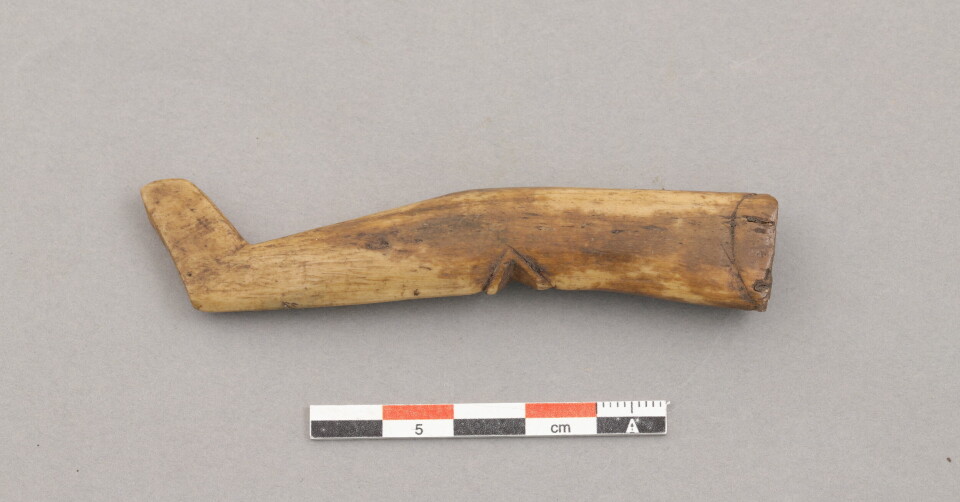
This is no standard handle, according to the archaeologists.
It is made of antler and made to look like a human leg with a boot. You can clearly see the knee bending.
“It’s quite a funny little find,” says Oldham.
“If you just needed a handle for a tool you could have made something much simpler than this.”
Perhaps it was used for a knife, or a bradawl or some other small tool. There are some scraps of metal left in the handle that might tell us more after x-rays.
“We don’t know of any similar finds, and that is what makes this so special,” says Åsheim.
6. Unknown item with carved décor
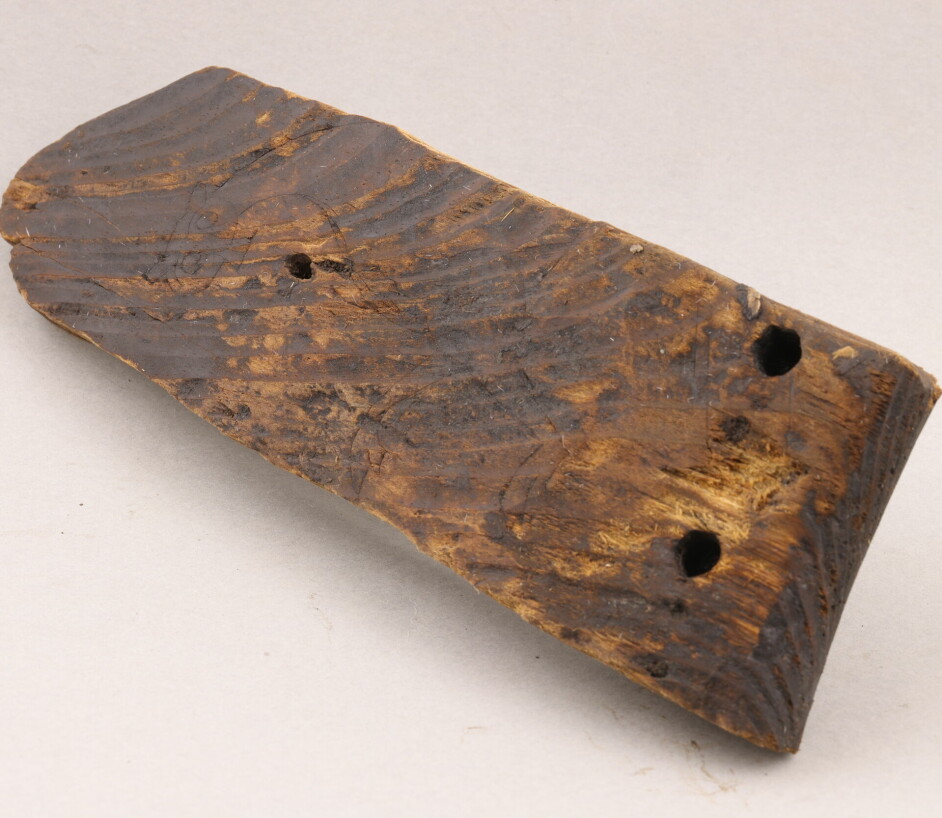
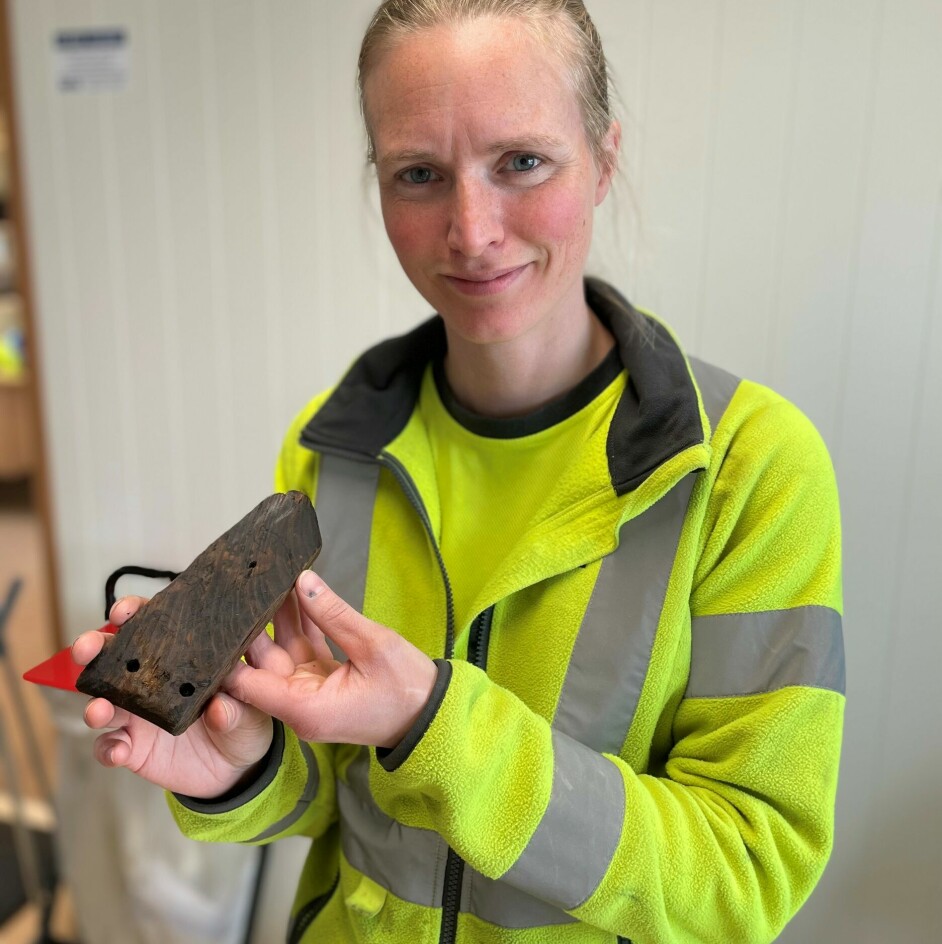
At first sight this was a muddy piece of wood, like many of the items found on an archaeological excavation. It was only once the item was rinsed and Linda Åsheim in the field office had a closer look that its unusual decoration was spotted.
This particular piece of wood has carved images of mythical creatures on both sides.
“We haven’t found anything with these sorts of decorations during the many years that we have been excavating this area. It’s quite rare to find items with mythical creatures on them,” says Oldham.
The archaeologists initially speculated that the piece of wood could have been part of the roof of one of the stave churches in medieval Oslo. This was however unlikely as the piece is far too small. Also, why would you decorate a roof tile on both sides?
The mysterious piece of ornated wood is dated to the 1100s.
7. Sword sheath with decoration
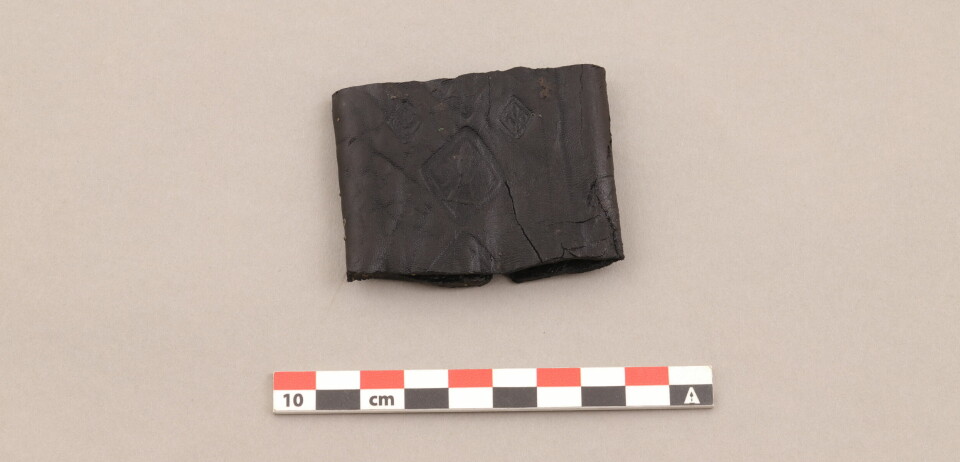
Only a small part of the sheath is preserved, and oddly enough it looks as though it was cut off the rest of the sheath with intention. Perhaps because the sheath was too long? Or perhaps the rest of the sheath was to be used for something else?
The leather is well preserved, but what makes it special, as with the piece of wood with mythical creatures, is the decoration: both sides of the sheath are stamped with fleur-de-lis.
The size of the sheath suggests that it was for a sword, in contrast to the sheath mentioned above, and as such would not be an everyday object.
“Perhaps it belonged to a city patroller mentioned in historical accounts” Oldham suggests.
“Magnus Lagabøte’s City Law tells us that they had a set route that they walked through the city to ensure order,” he says.
8. The shoe
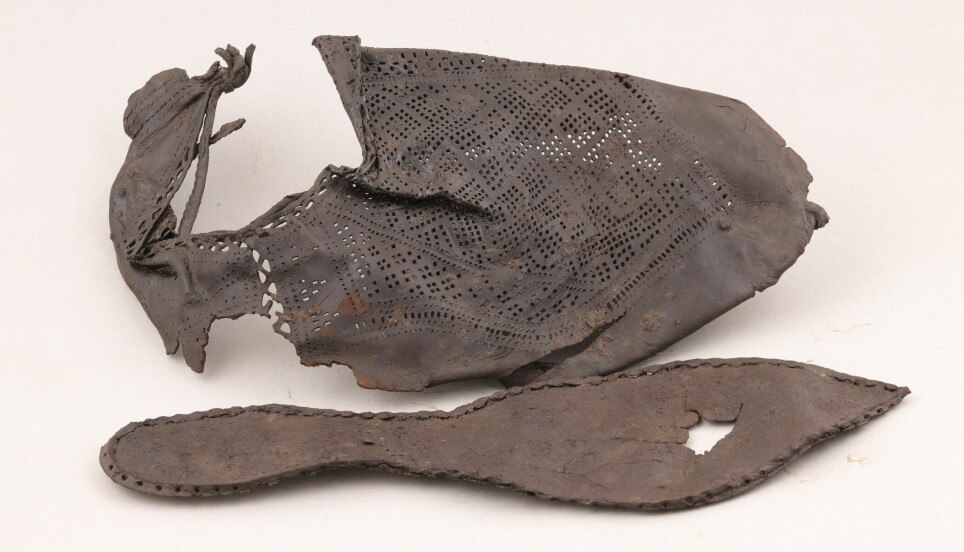
This is a very special shoe.
It has to be a special shoe in order to make this list.
Because according to Oldham and Åsheim, it’s nearly impossible to dig even one inch without finding remains of medieval shoes.
“We find shoes everywhere, in almost all the layers we go through,” says Oldham.
Fragments of shoes and ceramics by the thousands have been found. Whereas clothes, mostly made of wool, would have become part of the soil, the leather shoes have had excellent conditions for preservation.
Even so, many of them are incomplete or damaged.
The shoe that has made the list, however, is in pristine condition. It’s a fashionable shoe with lots of patterns, and an intact pointy sole.
“We have found thousands of shoes and parts of shoes. But perhaps only 3-5 shoes that have such an amazing pattern as this one,” says Åsheim.
“You can just imagine somebody walking around in these fashionable shoes in the city. Perhaps they wore colourful socks in them, to show off the pattern. Bright red or something,” she says.
9. A cheese form
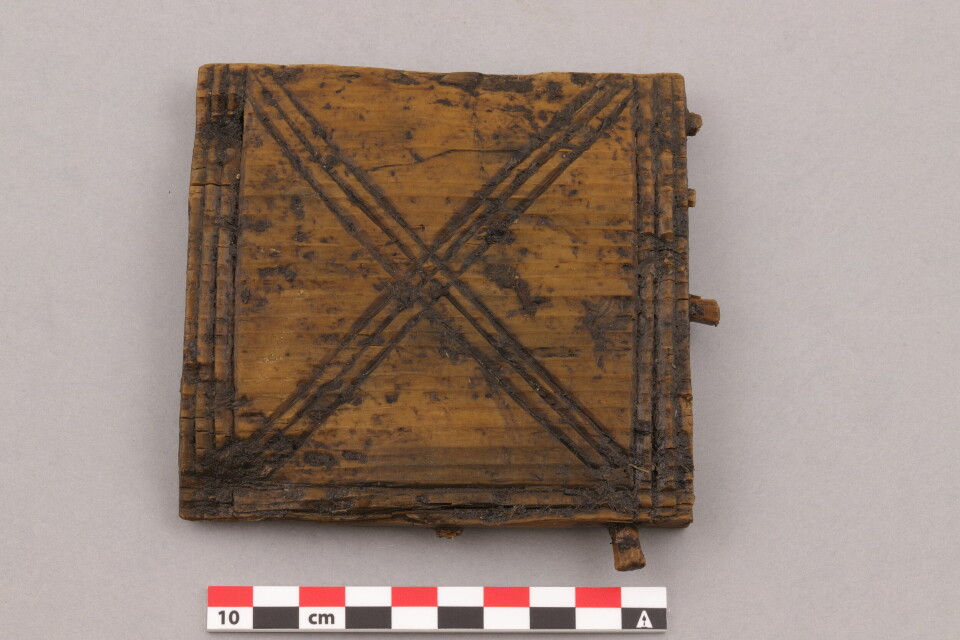
This was used to make patterns in the cheese or butter made in an everyday home.
“This is what cheese forms look like even today, this is a very traditional appearance”, says Åsheim.
Finding one here means that also people who lived in the city had these kinds of things and made these kinds of products. Which is perhaps not so surprising, as butter was more than just something to eat – you could in fact pay your taxes in butter.
“Most people would churn their own butter, and most likely had a few animals of their own. A cow, perhaps a pig and a sheep as well,” the archaeologist says.
10. An unusually small gaming board for merels
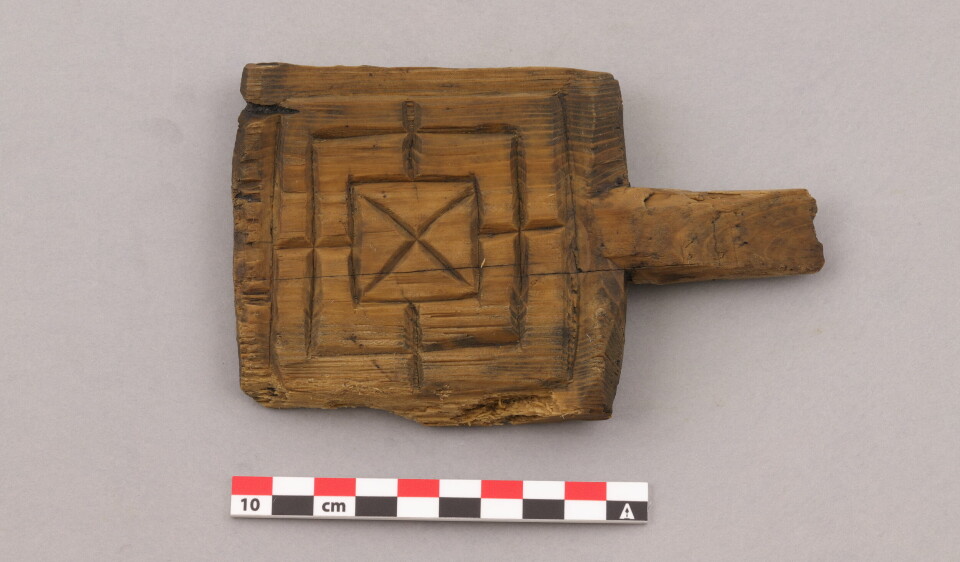
Most of the gaming boards for merels that are found have simply been carved into tabletops or the like. This gaming board has, however, been intentionally made as a gaming board.
“Somebody has taken a bit of extra care in carving this, with the x in the middle, I haven’t seen that before”, said NIKU-archaeologist Chris McLees when sciencenorway.no wrote about gaming pieces found during the medieval Oslo excavation.
- More in this story: Gaming-pieces and a gaming board found in the Medieval Park in Oslo
“This is an unusual example in its size and would require very small gaming-pieces to play it. Maybe it’s a child’s game. Or someone found this piece of wood and just decided to use it for this. Perhaps it was like a little travel game? Somebody decided to take this on a journey, I’ll put it in my rucksack and play some merels on the journey,” McLees speculated.
11. An intact two-sided comb
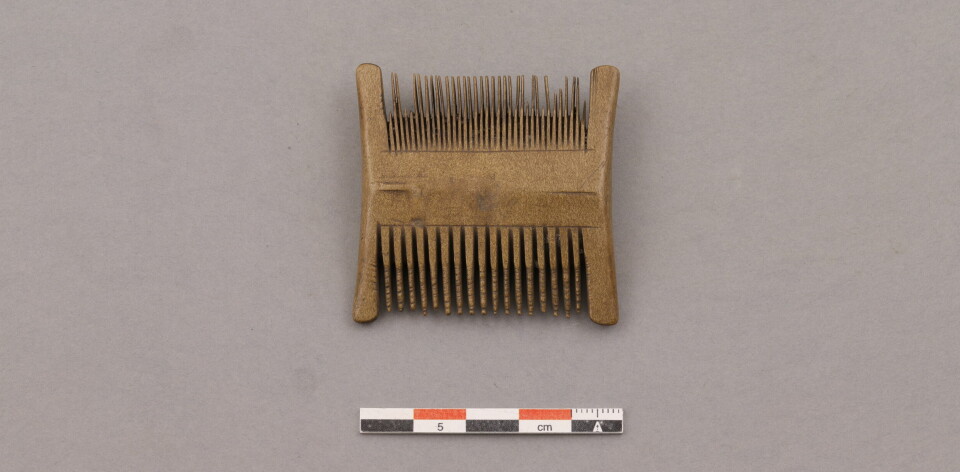
A total of 29 medieval combs have been found, but this is the only one carved out of a single piece of antler.
“It was most likely a lot easier to make combs by combining different parts. If you messed up one thing while carving this, the entire comb would be ruined,” says Oldham.
The incredibly well-made comb would not have been made by just anybody, but by a comb-maker who knew what he or she was doing.
































